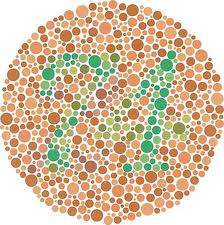Dewey 21C: July 2010 Archives
The New York State Department of Education has recalibrated the state test scores for ELA and math, and this moment of clarity tells us that "just more than half of city students in the third through eighth grades are proficient in math, not four out of every five, as they were led to believe last year."
The New York Times goes even further:
But perhaps even more significant is that the state's readjustment of the scores exposes the score inflation and could raise new questions about the imprecision of educational testing, even as policy makers across the country, including President Obama, are relying on such measurements to determine teacher pay and whether or not a school should be shut down. In New York City, the scores on the state tests have been used to assign A through F grades to each school, as well as thousands of dollars in principal and teacher bonuses.So, after having watched the curriculum narrow significantly since NCLB, particularly for schools not meeting annual yearly progress and for those students from lower socioeconomic backgrounds, what does this portend? More of the same? Meaning, more and more test prep, more and more teaching to the test, more and more testing, all at the expense of all subjects not ELA and math.
Or, is there something different on the horizon, perhaps a fundamental rethinking of what education and testing really means, with an renewed commitment to expand rather than narrow the curriculum?
Doesn't this just make your blood boil, the thought that subjects like the arts and physical education, were allowed to decline based upon a faulty system of measurement? And this decline was further fueled by the positive results from a narrowed curriculum, only to learn that the results were illusory?
Click here to read about this in The New York Times.
Click here to read about this in GothamSchools.org

As an quick update: this just in via email from the USDOE i3 Team:
Thank you for your participation in the Investing in Innovation (i3) program and for your efforts to improve public education. The U.S. Department of Education (Department) received nearly 1,700 applications for the i3 competition. We are pleased to share that we will announce the names of the highest-rated applicants on August 5, 2010. At that time, we will post a press release on the Department's Web site, as well as share further guidance on the required 20 percent private-sector match. Evidence of this match must be submitted to the Department by September 8, 2010.
In accordance with the Department's ongoing commitment to transparency, the peer reviewers' comments and scores for all highest-rated applications will also be posted on the i3 Web site on August 5, 2010. In addition, we will simultaneously post the project narratives for all of the highest-rated Scale-Up applications. The narratives for the highest-rated Validation and Development applications will be posted as soon as possible. Consistent with the Department's practices for releasing such information, these documents will be redacted, where appropriate, to protect privacy information about an individual and proprietary information.
While summary information on all applicants is available on data.ed.gov, we encourage all highest-rated applicants to take advantage of tools such as the Open Innovation Portal (innovation.ed.gov) and the Foundation Registry i3 (foundationregistryi3.org), to provide as much information as possible about their applications to a wide variety of potential funders (see Securing the i3 Private-Sector Match: A Resource for Applicants, available online at http://www2.ed.gov/programs/innovation/privatesectormatch.pdf).
An Overview of the i3 Review Process (July 26, 2010), a newly created document that explains the i3 review and selection process, is also available on the i3 Web site at http://www2.ed.gov/programs/innovation/index.html.
We thank you for your participation in this grant competition.
Regards,
The i3 Team
As word is starting to make its way around the country regarding approvals and declinations for the 2010 USDOE Arts Education Model Development and Dissemination program (I am extremely happy to say the The Center for Arts Education was awarded a 2010 AEMDD grant!), I've been hearing conflicting information about when the results of the USDOE i3 program will be announced.
My previous blog entries about i3 can be seen here, here, here, and here.
Okay, so, who did apply to i3 for an arts project, what was the application for, and how much was requested?
With the help of my colleague Jonathan Greenberg, I have compiled two documents directly from the recently released data from the USDOE. The first document contains a list of applicants that included the arts as a substantial part of their application. The second provides key information, including the project description, amount requested, list of partners, etc.
Out of the nearly 1700 applications in total, 52 were arts focused. The largest number of applications from any single state were from New York (12). Overwhelmingly, the lion share of applications were for the lower-tier of grant amounts (43 for the "development" category). Nine applications were for the "validation" tier, and no applications were made for top tier, "scale-up," which maxes out at $50,000,000.
For those who would like to search the USDOE database, click here for the link.
Now, I wish I had the time to do further analysis, including a breakdown of percentage of applications for each competitive priority, discipline, etc. There's a lot that could be done here. Perhaps I will get to it shortly, but for the moment, if you would like to take a look at 52 applications submitted to the USDOE's i3 program, take a look at these two documents.
Now for my disclaimer: To compile this list, I searched on the following terms: arts, art, music, dance, theater, opera. It's possible I missed some that were not returned as results to those query terms. If you're one of those that were missed, apologies in advance.
Arts Applications to USDOE i3
Arts Applications to USOE i3--Key Information and Project Description
Meanwhile, a few words on my perspective for the arts as education as of today. I wish I could say that we are due for a Bastille Day celebration for the reinstatement of the arts as a line item in the New York City school system budget. It would be nice to assert that more and more of our principals will be eager to learn the value of the arts for all their kids and follow the guidelines I laid out in my Lessons Learned article for effective arts education programs and policies. It would be fantastic if the classroom and specialists teachers in our schools would unite to extol the impact of the arts in their classrooms and cultural partnerships; we need both the principals, teachers, students and parents as our champions more now than ever. It would be remarkable if all the education directors in the cultural community, who are usually lowest on their institutional totem pole, would join to make a compelling case for their contributions to their organization and importance to the civic health of our great city. Those are just a few of my perpetual wishes for the next year. And because I've lived through so many cycles of foreign wars, shrunken economics, school system "reforms" and political upheavals, I sigh and then more or less accept that embedding the arts as education for all our children and youth remains a tantalizing dream in our continuing American experiment. As Deb Meier reminded the NYSCA gang at last year's final ESP summer seminar, schooling is hard change, requires a will, patience, stubbornness, and probably cockeyed optimism that keeps folks like us struggling to make progress, however modest, toward our goal.
Jane Remer July 14, 2010 *************************************************************************************************************** JANE REMER'S CLIFFNOTES We are at another rocky precipice in our history that threatens the survival of the arts in our social fabric and our school systems. The timing and magnitude of the challenges have prompted me to speak out about some of the most persistent issues in the arts education field during the last forty-plus years. My credo is simple: The arts are a moral imperative. They are fundamental to the cognitive, affective, physical, and intellectual development of all our children and youth. They belong on a par with the 3 R's, science, and social studies in all of our elementary and secondary schools. These schools will grow to treasure good quality instruction that develops curious, informed, resilient young citizens to participate fully in a democratic society that is in constant flux. I have chosen the title Cliff Notes for this forum. It serves as metaphor and double entendre: first, as short takes on long-standing and complicated issues, and second, as a verbal image of the perpetually perilous state of the arts as an essential part of general public education. I plan to focus on possible solutions and hope to stimulate thoughtful dialogue on-line or locally. ************************************************************************************************************
 Jane Remer has worked nationally for over forty years as an author, educator, researcher, foundation director and consultant. She was an Associate Director of the John D. Rockefeller 3rd Fund's Arts in Education Program and has taught at Teachers College, Columbia University and New York University. Ms. Remer works directly in and with the public schools and cultural organizations, spending significant time on curriculum, instruction and collaborative action research with administrators, teachers , students and artists. She directs the Capezio/Ballet Makers Dance Foundation, and her publications include Changing Schools Through the Arts and Beyond Enrichment: Building Arts Partnerships with Schools and Your Community. She is currently writing Beyond Survival: Reflections On The Challenge to the Arts As General Education. A graduate of Oberlin College, she attended Yale Law School and earned a masters in education from Yale Graduate School.
******************************************************************************************************
Jane Remer has worked nationally for over forty years as an author, educator, researcher, foundation director and consultant. She was an Associate Director of the John D. Rockefeller 3rd Fund's Arts in Education Program and has taught at Teachers College, Columbia University and New York University. Ms. Remer works directly in and with the public schools and cultural organizations, spending significant time on curriculum, instruction and collaborative action research with administrators, teachers , students and artists. She directs the Capezio/Ballet Makers Dance Foundation, and her publications include Changing Schools Through the Arts and Beyond Enrichment: Building Arts Partnerships with Schools and Your Community. She is currently writing Beyond Survival: Reflections On The Challenge to the Arts As General Education. A graduate of Oberlin College, she attended Yale Law School and earned a masters in education from Yale Graduate School.
******************************************************************************************************
Here's to the 324th entry!
************************************************************************************************************
It seems to me that for many years the rhetoric of creativity was owned by the arts ed field. It would be fair to say that was a time when few were listening.
Today, creativity is perking up and ownership is up for grabs.
Can the arts education field successfully make a case here for creativity or has it already been successfully claimed by STEM, where giant government and private grants are being made to support creativity within science, engineering, technology, and math. These grants which are often tied to service delivery, including consultancies, dwarf the sorts of funding that goes to the arts field. It's a good way to view how the arts have had a hard time becoming part of the education-industrial-complex.
Promising ventures can be seen through things like the 2010 Creativity World Forum in Oklahoma.
And, Click here to read a Newsweek piece: The Creativity Crisis.
It's a good read, in particular for illuminating the question of who own's creativity:
Overwhelmed by curriculum standards, American teachers warn there's no room in the day for a creativity class. Kids are fortunate if they get an art class once or twice a week. But to scientists, this is a non sequitur, borne out of what University of Georgia's Mark Runco calls "art bias." The age-old belief that the arts have a special claim to creativity is unfounded. When scholars gave creativity tasks to both engineering majors and music majors, their scores laid down on an identical spectrum, with the same high averages and standard deviations. Inside their brains, the same thing was happening--ideas were being generated and evaluated on the fly.I will add another twist to this: while this article could be interpreted as a sign of a growing interest in"creativity," while at the very same time I am watching an emerging issue out of New York State, where the entire state testing regime is being examined by one of the best in the business: Daniel Koretz.
Click here to read a fascinating piece by Sol Stern: Can New York Clean Up The Testing Mess?
As a prelude, the tests have already been adjusted, and what we are most likely to see going forward is a lower test scores, which will result in a lower graduation rates, which in turn will most likely cause a reset of the "achievement gap," ultimately leading to either even more of the same (testing, test prep, reading and math funding increases, growth in supplemental services for these subjects, etc.) or perhaps some new thinking on the meaning, value, and implementation of testing regimes. Admittedly, it is hard to "imagine" we will get anything but even more of the same.

There are those who believe that "facts" as the primary ammunition of advocacy will win the day.
Of course, if you take a good look at major education movement such as charters and small schools, you may be surprised to note that the genesis of these movement emerge not out of "facts" but out of faith.
So, fiction can be fact and vice versa. A case in point here is the way people talk about value-added assessment, meaning the evaluation of teachers based to a large degree upon test scores. For many policy makers, it is fact, the education equivalent of established law. Talk to the researchers, the experts in this area, and they will tell you it is "not there yet."
Okay, so, here's the article from The Boston Globe: How Facts Backfire.
Facts don't necessarily have the power to change our minds. In fact, quite the opposite. In a series of studies in 2005 and 2006, researchers at the University of Michigan found that when misinformed people, particularly political partisans, were exposed to corrected facts in news stories, they rarely changed their minds. In fact, they often became even more strongly set in their beliefs. Facts, they found, were not curing misinformation. Like an underpowered antibiotic, facts could actually make misinformation even stronger.So, Richard, what's the upshot of all this, for arts education? Well, I guess it would be fair to say that we shouldn't wait until that silver bullet appears, for even if it does, it may not matter.
Believe in what you advocate for. Engage in it and encourage others to do so. Be passionate, and yes, know the "facts," but don't expect them to save the day, anytime soon.
Okay, very quickly I received about 50 emails about these two news items:
First, is an interview on The Newshour:
CHUCK CLOSE: Well, I think the problem with the arts in America is how unimportant it seems to be in our educational system. I grew up in a town that was a mill town, very poor, Appalachian-like, except that it was in the state of Washington. And we had as a guaranteed right from kindergarten through high school art and music every day of the week. Today that is considered to be far less important than the three R's. There is teaching for testing, and for those of us who, especially for us who are learning disabled or for those of us who learn differently, we had a chance to feel special. Every child should have a chance to feel special. If they are not good at math or science -- I can't memorize and I don't know the multiplication tables even today -- I had something that I could excel at. And that I think, that is the most troubling thing that's happened, especially with teaching through testing, that we are trying to get people to know the same thing as a kind of a litmus test to allow them to go to college or whatever. I'm a product of open enrollment. I went to a junior college that took every taxpayers son or daughter. And if I hadn't had that and hadn't had that exposure to art and music and something that I could excel at and something I could feel good about -- I've always said if I hadn't gone to Yale, I could've gone to jail. And it was a tossup. It could've gone either way.
Second, it was a interview in WashingtonCityPaper.com, this one is a keeper:
In New York City, every time they have a budget cut, the first thing to go is art. Teaching for testing is ruining education, and it is certainly ruining alternative ways of learning because they are so intent on having you know the right facts and things to spit back that it has taken the creativity out of the hands of the teacher. It is terrible! I can't imagine how depressing it is to get these people out of high school going into the college system who have had such a limited notion of what success can be.
I am an advisor to Mayor Bloomberg and [New York City Schools] Chancellor [Joel] Klein, and I argue with them all the time. "You have a high drop out rate. Why do you think you have a high drop out rate? Because you have such a narrow notion of what success can be!"

